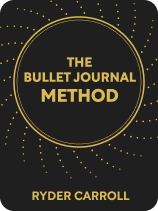

This article is an excerpt from the Shortform book guide to "The Bullet Journal Method" by Ryder Carroll. Shortform has the world's best summaries and analyses of books you should be reading.
Like this article? Sign up for a free trial here .
Do you want to know how to maximize your time? How can using the Bullet Journal Method help you?
If you feel like time is your enemy and you just don’t have enough hours in the day, you should try bullet journaling. This may sound like an odd and counterintuitive solution at first, but bullet journaling can help you become more productive and organized so you can focus your time on what matters.
Here are some Bullet Journal productivity tips from Ryder Carroll.
Maximizing Time
According to the author of The Bullet Journal Method, Ryder Carroll, true productivity requires that we take full advantage of the time we have. He says that while we only have so much time available, we have the power to make our time more valuable by being mindful about how we spend it.
(Shortform note: Carroll suggests that we can make our time more valuable—but what does “valuable” actually mean in this context? Would everyone agree on what is a “valuable” use of time? Arguably not—for example, for some, time is worth the most when they use it to make money, which is evident in Western culture’s use of the phrase “time is money.” For others, time is most valuable when spent with loved ones, or when pursuing a hobby. It’s therefore down to you to decide what constitutes a valuable use of your time.)
Sometimes, however, it feels as if this is easier said than done. In addition to the endless task lists and distractions that cause us to feel perpetually busy and lose track of time (as previously discussed), there are moments when we worry that we don’t have enough time left and are wasting it away. Especially in Western culture, we fear death and the change that comes with it.
(Shortform note: Although Carroll mentions Western culture’s fear of death, he doesn’t explain what causes these fears and how they impact perception and behavior. While almost every culture experiences some extent of anxiety surrounding death, they differ in how they manage it. Western cultures are considered “death-defying,” which means they have a strong aversion to death. On the one hand, this helps people in Western cultures by causing them to do anything it takes to stay alive and therefore pour more energy into leaving a lasting legacy. On the other hand, it influences negative and even potentially destructive behaviors, such as avoiding confrontation with dying loved ones or participating in risky activities like skydiving, as acts of defiance.)
The Bullet Journal Solution
Fortunately, time doesn’t have to be your enemy. Carroll says that if you want to know how to maximize your time, you have to be more strategic about how you spend it. He recommends two Bullet Journal productivity methods to help you do this: time boxing and scheduling.
According to Carroll, time boxing is a method in which you allot a specific amount of time to complete or make progress on a task. (For example, if you need to write a blog post for a client, you would block off 2 p.m. to 4 p.m. and commit to finishing the blog post within that window.) Carroll argues that this method is beneficial because it forces you to remain focused to accomplish your goal within the allotted time period. Not only does this prevent your responsibilities from dragging on unnecessarily, but it also frees up time to spend on other things you want to do.
(Shortform note: In his explanation of time boxing, Carroll focuses exclusively on its advantages. However, there are some disadvantages to be aware of when choosing whether to use the strategy. One downfall of time boxing is that it forces you to stop working on a task once the allotted time has passed, and this can be disruptive if you’re in a state of flow. Additionally, time boxing can pressure you to rush tasks that require time and focus, therefore reducing the overall quality of your work. Finally, it’s not always easy to select an appropriate amount of time to work on a task—too long and you lose focus, too short and you don’t accomplish what you intended.)
Second, Carroll explains that scheduling is a method in which you plan to complete the most challenging tasks during your most productive time of day. (For example, if you know you work best in the morning, plan to do the most difficult task of the day first.) By working with your energy levels rather than against them, Carroll argues, you can complete challenging tasks more easily and therefore build motivation to work on other projects.
(Shortform note: While it can be useful to know your most productive time of day, it’s not always easy to recognize. Although Carroll doesn’t give any tips for how to determine when you’re most productive, there are resources that can help. For example, chronotype theory, which assigns each person to one of four animal-based categories based on their internal clock, can give you insight into your productivity patterns and help you plan your day-to-day schedule more wisely.)

———End of Preview———
Like what you just read? Read the rest of the world's best book summary and analysis of Ryder Carroll's "The Bullet Journal Method" at Shortform .
Here's what you'll find in our full The Bullet Journal Method summary :
- A comprehensive guide to using the Bullet Journal Method
- How to maintain a journaling practice that can improve your overall quality of life
- How to extend the method beyond productivity to a practice in mindfulness






